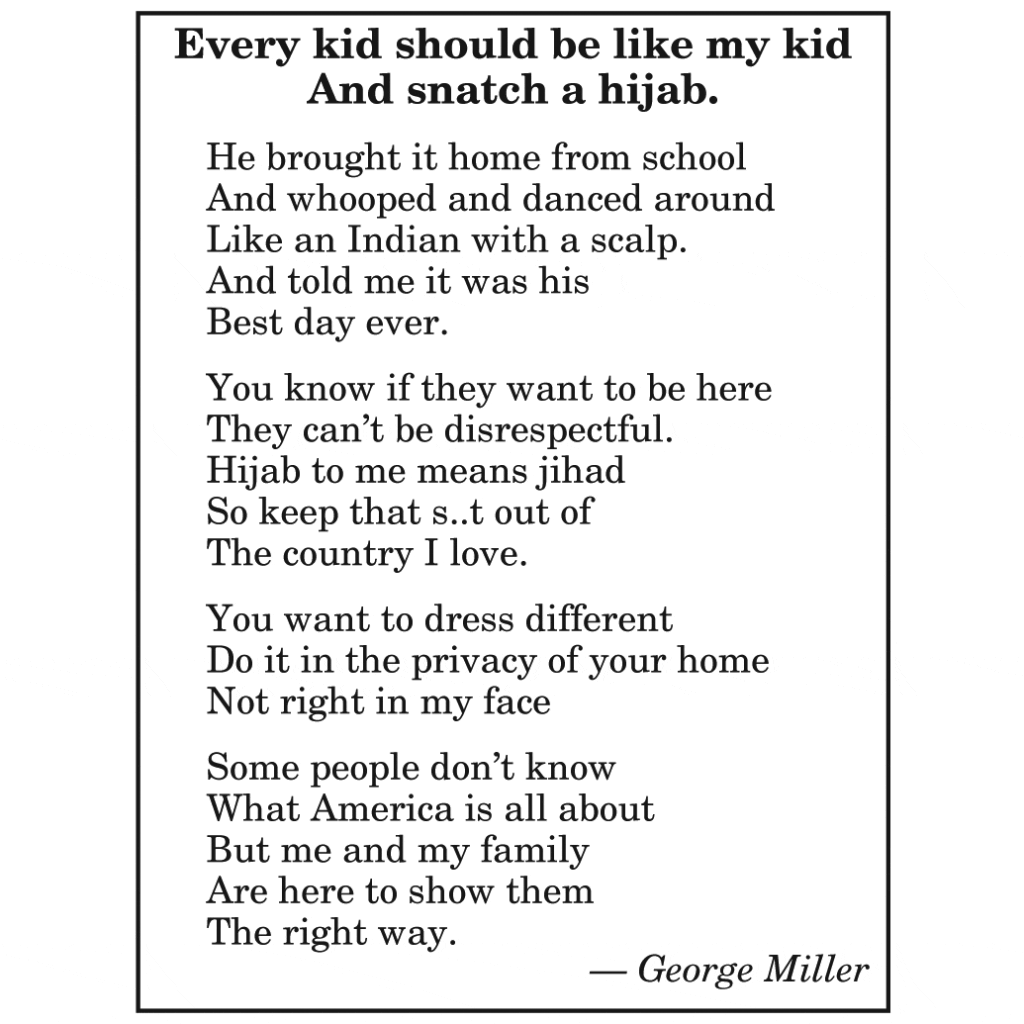
 This too shall pass!
This too shall pass!
Even though attribution for the above phrase to the Christian bible is only partially true, it is not a direct quote. In our combined secular and religious world, this too shall pass is used to prevail over conflict, difficulty, disappointment, and troubled times.
What does not kill us will make us stronger.
The flap over the artwork on display at the Richard and Gina Santori Public Library of Aurora which was brought to the surface within the last 12 days, has contained a ripple of repercussions. See the following articles from The Voice for follow-up information and opinions:
Reader’s Commentary by involved persons on controversial art display: Offensive, divisive, prejudice
Reader’s Commentary by involved persons on controversial art display: An apology for the display
Residue of APL art-poem stunning
The Aurora Public Library received many complaints and much feedback over the poem by a college philosophy teacher who said it was satire. Richard Irvin, the mayor of Aurora, and John Savage, president of the Library Board of Directors, wrote commentaries which were in The Voice last week in condemnation of and apologizing for the display.
Primarily negative reaction filled social media. Taking down the display which made references to Islamic women’s head covering (hijab) with a Confederate flag shown under the words, produced a crowd of more than 40, at the Aurora Public Library Board meeting, Wednesday, April 25. Pressure had been diffused.
There were only four public speakers. The mixture at the meeting proved interesting and even surprising. Speakers included Greg Gunty and Marjorie Logman of Aurora, both of whom expressed interest in calm. The first speaker was Aliya Husain, a representative of Islamic organizations which seek to build better relations. They are non-partisan. She said, that in spite of satire, “the referencing of ‘scalping’ and the demonetization of the hijab promoted intolerance….” Gina Santori, whose name is on the building along with her late husband, Richard, gave a tearful apology. She made a reference to wearing a veil to Roman Catholic services. Both ladies left the room prior to the end of the meeting. They had shared a hug in the room.
Ms Husain, who was wearing the appropriate Hijab for her religion, outside of the meeting room answered reporters’ questions. Mrs. Santori approached Ms Husain quickly and offered personal apologies. Ms Santori said she never saw the art display. She said she lives in Lisle and in Chicago. “Where in Lisle?” the youthful Ms Husain asked. After the youthful Ms Santori gave the subdivision name the two ladies discovered simultaneously that they lived two blocks apart in Lisle. “Come see me some time,” Ms Husain said with emphasis.
There was cordiality and understanding between the two women in greater measure than during reactions the previous week among observers in the controversial artwork. Approximately 10 members, most without wearing hijab, and mixed gender in the Islamic group, looked on approvingly with smiles.
Simplistic? Yes. Solutions will lie ahead for society. Future reactions may be more measured. Discussions likely will continue over the directions of future displays and over the actions taken by those in control in all phases. Were reactions too strong? Just the same as in reactions to art: It is in the eye of the beholder. Resolution is the common ground.
Here is the controversial poem to the right. The Voice prints the poem to inform the readers and allow them to decide the meaning. Our aim is peaceful resolution and understanding.

